Type Salad dressing or dip | ||
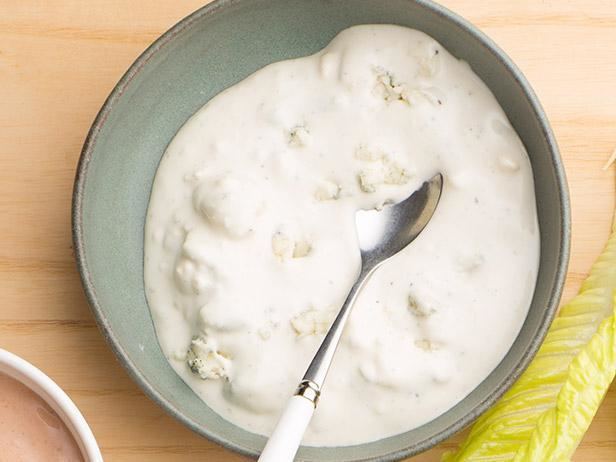 | ||
Main ingredients Similar Ranch dressing, Mayonnaise, Sour cream, Romaine lettuce, Caesar salad | ||
Blue cheese dressing how to make the best creamy blue cheese dressing
Blue cheese dressing is a popular salad dressing and dip in the United States. It is usually made of some combination of blue cheese, mayonnaise, and either or all buttermilk, sour cream or yogurt, milk, vinegar, onion powder, and garlic powder. There is a blue cheese vinaigrette that consists of salad oil, blue cheese, vinegar, and sometimes seasonings.
Contents
- Blue cheese dressing how to make the best creamy blue cheese dressing
- How to make homemade blue cheese dressing
- Ingredients and Their Functions
- Emulsion
- Emulsifiers
- Problems During Shelf Life
- References
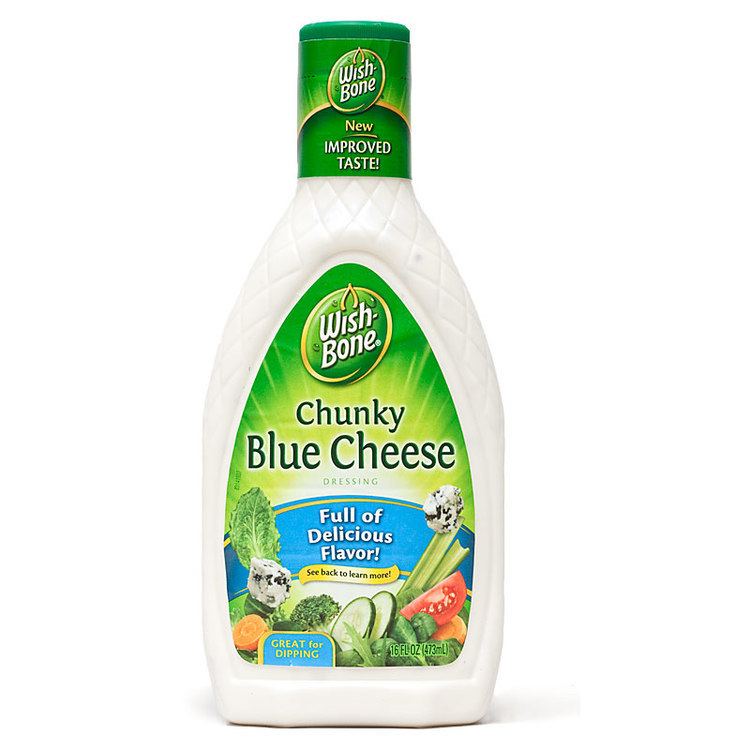
Most major salad dressing producers and restaurants in the United States produce a variant of blue cheese dressing. It is commonly served as a dip with buffalo wings or crudités (raw vegetables).
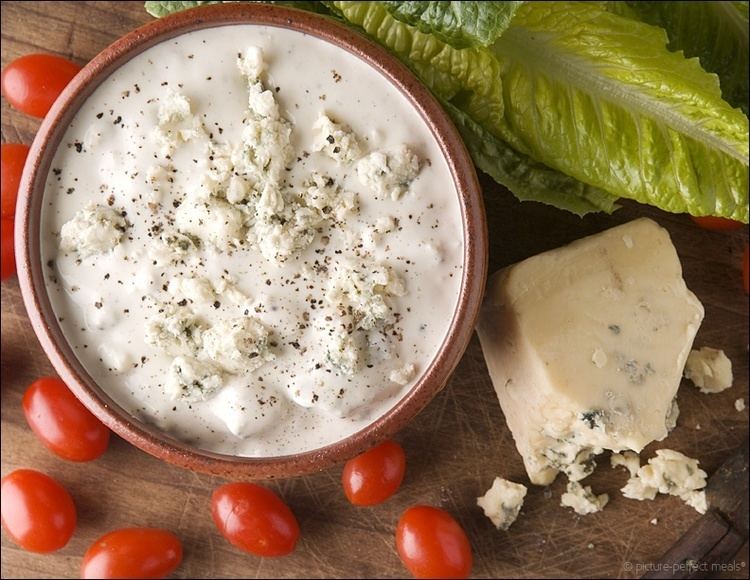
How to make homemade blue cheese dressing
Ingredients and Their Functions
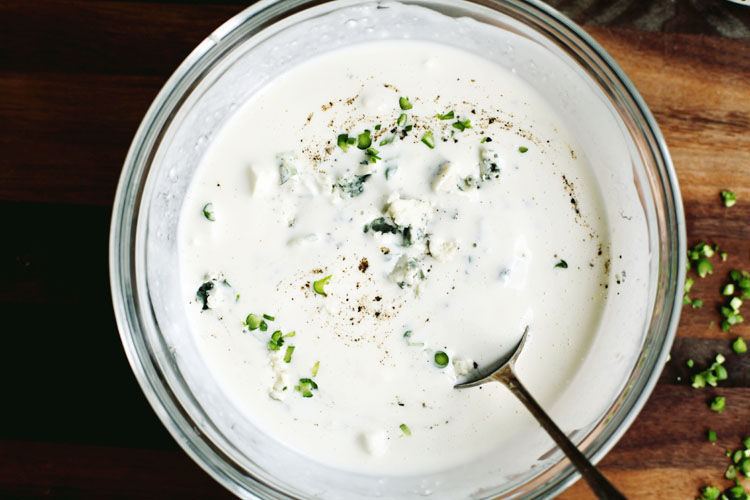
Soybean oil is the dispersed phase in a blue cheese dressing emulsion. It is commonly used in the commercial production of dressing because it is a cheap source of oil. The oil is typically extracted from soybeans through solvent extraction and is highly refined and processed. Polyunsaturated soybean oil mainly consists of linolenic acid, linoleic acid, oleic acid, stearic acid, and palmitic acid.
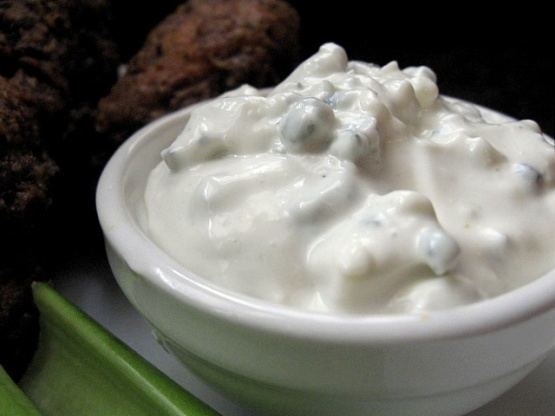
Water is the continuous phase in blue cheese dressing. It is the medium in which all other ingredients are mixed into.
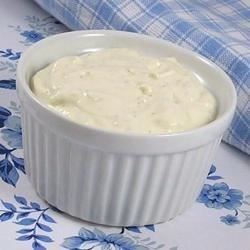
Blue cheese is usually added to commercial dressings in crumbles so that the finished product is chunky. It is responsible for giving blue cheese dressing its signature flavors and aromas.
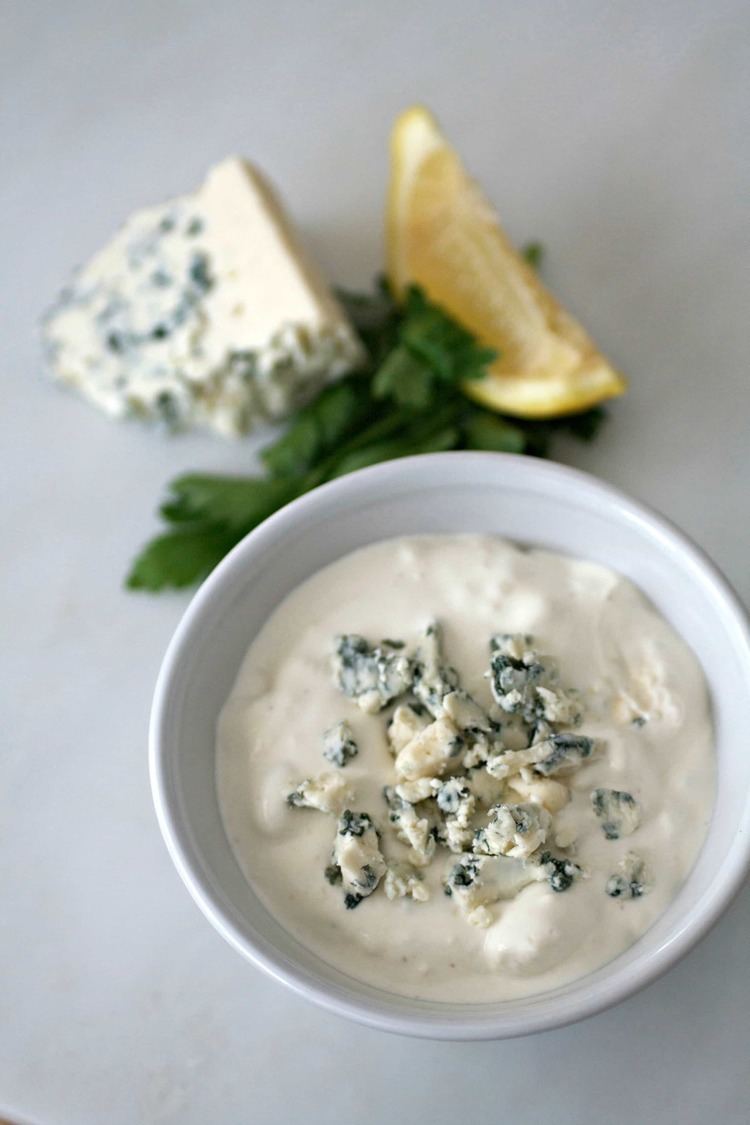
Vinegar is part of the continuous phase in blue cheese dressing. Its main components are water and acetic acid. Since it is an acid, it is responsible for lowering the pH of the dressing and providing flavor.
Sugar, salt, and natural flavor are all added to enhance the flavor of blue cheese dressing. Sugar is added to sweeten it, salt is added to enhance the saltiness that is characteristic of blue cheese, and natural flavors bring some of the fresh blue cheese flavor back to processed blue cheese dressing.
Xanthan gum is a carbohydrate polymer produced through the fermentation of corn sugar. Propylene glycol alginate is alginic acid that has some of its carboxyl groups esterified with propylene glycol. Both xanthan gum and propylene glycol alginate are used to stabilize and thicken the blue cheese dressing emulsion. Emulsion stabilizers are important to blue cheese dressing because they prevent the oil and water from separating by forming a network in which the oil droplets become entangled. The thickening of blue cheese dressing is important because high viscosity is expected and preferred by consumers.
Lactic acid is added to blue cheese dressing to lower the pH, and therefore plays a role in the prevention of microbial spoilage.
Polysorbate 60 is used as an emulsifier in blue cheese dressing. It contains a hydrophilic portion and hydrophobic portion so it can lower the surface tension in emulsions and prevent the separation of oil and water. Polysorbate 60 has an HLB value of 14.9, which means that it is a more hydrophilic emulsifier. This works well for blue cheese dressing since water is the continuous phase.
Dried garlic and onion are added to blue cheese dressing to provide flavor.
Artificial color and beta-carotene are used for color in blue cheese dressing. Beta-carotene is a naturally occurring red-orange pigment found in fruits and vegetables and is a precursor to vitamin A. The combination of artificial color and beta-carotene influence and maintain the white color of blue cheese dressing.
Potassium sorbate and calcium disodium EDTA are preservatives used to extend the shelf life and protect the flavor of blue cheese dressing. Potassium sorbate is a commonly used salt preservative that inhibits the growth of yeasts and molds in many foods. EDTA is a metal chelating agent and is commonly used in foods to prevent oxidative rancidity.
Emulsion
Blue cheese dressing is an oil-in-water emulsion. This means that the dispersed phase is oil and the continuous phase is water. Since oil is hydrophobic, it has a high affinity for itself when added to water. This creates surface tension, which means that water will form a surface between itself and the oil. In order to reduce this surface tension, emulsifiers are added to the dressing so that water and oil can mix.
Emulsifiers
Emulsifiers are amphipathic molecules that contain a polar, hydrophilic head group and a nonpolar, lipophilic tail group. Some emulsifiers can be more hydrophilic or more lipophilic than others. The Hydrophile-Lipophile Balance is used to rate the solubility of an emulsifier in polar and nonpolar solvents. The scale ranges from 1 to 20, 1 being the most lipophilic emulsifiers, and 20 being the most hydrophilic emulsifiers. For blue cheese dressing, an emulsifier with an HLB value between 8 and 18 is ideal since a more hydrophilic emulsifier is needed for an emulsion with water as the continuous phase. A common emulsifier used in blue cheese dressing is polysorbate 60, which has an HLB value of 14.9.
HLB = 20(1-S/A)
S = saponification number of ester
A = acid number of acid
Problems During Shelf Life
Blue cheese dressing is susceptible to many different shelf life issues including oxidative rancidity and the generation of off-flavors, separation, and microbial spoilage.
Oxidative rancidity occurs when long chain fatty acids (like those found in soybean oil) become oxidized due to certain conditions such as light, heat, oxygen, heavy metals, etc. It involves three steps, initiation, propagation and termination, and it results in the formation of off-flavors, off-aromas, and compounds potentially hazardous to human health. Since soybean oil contains different types of unsaturated fatty acids, it makes blue cheese extremely vulnerable to lipid oxidation.
Separation of water and oil (instability of the emulsion) is another potential problem with blue cheese dressing storage. Three of the main mechanisms of instability in blue cheese dressing are creaming, flocculation, and coalescence. Creaming is when the dispersed phase oil droplets float to the top of the blue cheese dressing due to their difference in density from water. Flocculation is when the oil droplets cluster due to weak attractive forces such as van der Waals interactions. Coalescence is when smaller oil droplets merge to form larger oil droplets.
Microbial spoilage is a concern for any type of processed food. Studies have shown that Saccharomyces bailii and Lactobacillus fructivorans are two common microorganisms that spoil salad dressings. They both are capable of fermenting sugar. Saccharomyces bailii is a yeast that is resistant to many weak-acid preservatives due to low intracellular pH, which reduces the accumulation of weak acid in the cytoplasm. This means that even in the presence of weak-acid preservatives such as lactic acid or acetic acid, Saccharomyces bailii can still grow. Lactobacillus fructivorans is a facultative anaerobe that is acid tolerant. It can survive in a low pH food such as blue cheese dressing.
